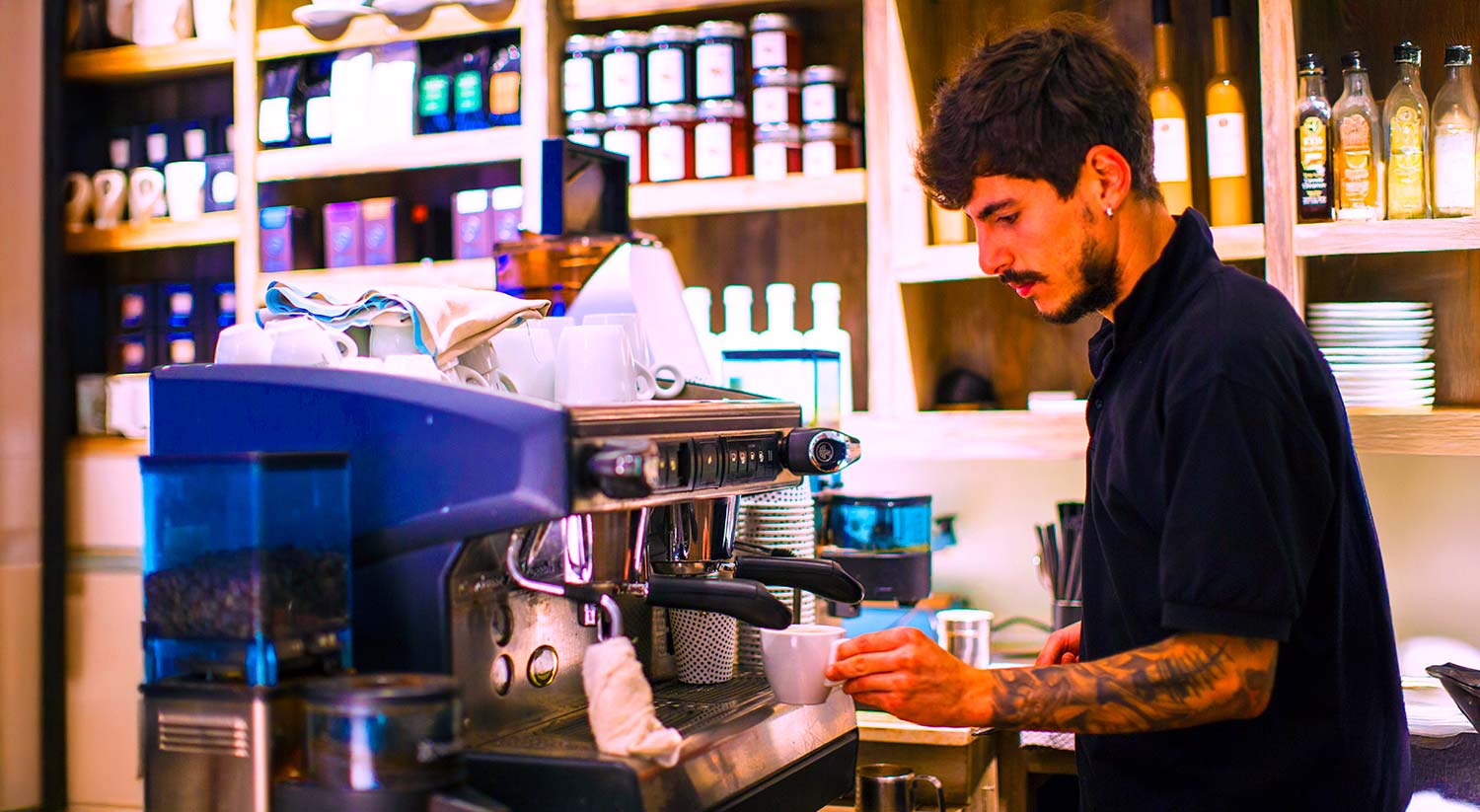Listeners:
Top listeners:
00:00
00:00
volume_up
chevron_left
-
 play_arrow
play_arrow
Costa Blanca Radio The Sound Of The Costa
-
 play_arrow
play_arrow
FeelGood Radio The Sound Of The Costa
music_note
If you think ordering coffee in Spain is as simple as getting a cappuccino in Italy or a filter coffee in the Netherlands, you’re mistaken. As Eva mentioned in her recent article about the often surprising reality of Spain, the Spanish coffee culture is a world of its own—full of nuances, regional differences, and subtleties that can easily catch outsiders off guard. Let me guide you through the fascinating world of Spanish coffee, so you’ll never look like a tourist at the bar again.
Espresso? Sí, but with a twist
Let’s clear up one misconception right away: Spain is not Italy. While the Spanish drink their coffee with just as much passion as the Italians, the Spanish espresso (café solo) is a little different. It’s often a bit less strong, slightly larger in size, and frequently served in a glass instead of a cup. But that’s just where the confusion begins.
Café con leche? Only at the right time
One of the most popular choices in Spain is café con leche—the Spanish take on a latte. But be warned: the time of day determines whether you can still get away with it. In the morning, it’s perfectly acceptable, but if you order a café con leche after midday, expect a raised eyebrow. The Spanish prefer their coffee black and strong as the day goes on.
The classic varieties (and how to order them)
Let’s take a look at the most common options:
- Café solo – A pure espresso, but slightly less intense than the Italian version.
- Café cortado – An espresso with a splash of warm milk. Perfect if you can’t decide between a café solo and a café con leche.
- Café con leche – Equal parts coffee and warm milk. Preferences for “leche caliente” (hot milk) or “leche templada” (lukewarm milk) are appreciated.
- Café americano – An espresso with extra water, similar to a black coffee in the UK.
- Café bombón – A specialty from Valencia: espresso with condensed milk. Sweet and intense.
- Café carajillo – For those who like their coffee with a bit more kick: espresso with a splash of liquor, such as brandy or rum. In some regions, the alcohol is flambéed first.
What you definitely shouldn’t order
Don’t want to come across as a clueless tourist by accident? Here are a few common mistakes:
- “Un cappuccino, por favor” – Unless you’re in a tourist café, cappuccino isn’t a standard option in Spain. You’re better off ordering a café con leche.
- “Café solo doble” – Technically, this is a double espresso, but in Spain, it’s often seen as an over-the-top request. It’s better to ask for a café solo grande or two separate café solos.
- Iced coffee without ice – Looking for a refreshing coffee in summer? Order a café con hielo: an espresso served with a glass of ice, so you can pour it yourself. Whatever you do, don’t ask for an “iced coffee”—you’ll probably just get a blank stare from the waiter.
Regional coffee specialties
Besides the standard options, there are also regional varieties that are well worth discovering:
- Café sombra and nube (Málaga) – In Málaga, they have their own unique system where the ratio of milk to coffee determines whether you get a sombra (shadow) or a nube (cloud).
- Café asiático (Cartagena) – A decadent combination of espresso, condensed milk, Licor 43, and cinnamon, served in a special glass.
- Café torrefacto (Northern Spain) – Coffee beans roasted with sugar, resulting in an intense and slightly sweet flavor.
Drinking coffee: a social affair
No matter what you order, remember one thing: drinking coffee in Spain is a social ritual. It’s not a quick fix or a rushed shot of caffeine to get you through the day. Spaniards take their time with their coffee, whether it’s at the bar or on a sunlit terrace. So if you really want to fit in, do as the Spanish do: order your coffee, sit back, and enjoy. Salud!
Written by: Wouter van der Laan
café con leche coffee etiquette Spain Coffee in Spain coffee tips Spain espresso Spain ordering coffee in Spain regional coffees Spain Spain travel tips Spanish bar culture Spanish coffee culture Spanish coffee varieties
Rate it
Similar posts
Search
Latest news
-
Recent Posts
© 2025 The Sound Of The Costa; All Rights Reserved








